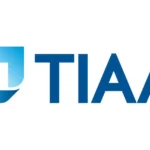Introduction
“Starting an ATM machine business offers steady income and low maintenance but requires careful planning and regulatory compliance.”
Starting an ATM machine business involves placing automated teller machines in high-traffic areas where people can conveniently withdraw cash. This business can be highly profitable, providing a steady stream of income through transaction fees.
To begin, you need to research the market, create a solid business plan, and understand the legal requirements. Additionally, choosing the right locations and purchasing reliable ATM machines are crucial steps. Regular maintenance and security measures will ensure smooth operation and customer satisfaction.
If you’re ready to dive into the ATM business, start by conducting thorough research and drafting a detailed business plan. Reach out to local businesses and property owners to find prime locations for your ATMs. Secure financing, purchase quality machines, and ensure you comply with all legal and regulatory requirements.
For more detailed information on each step, including choosing the best ATM machines and managing cash flow, continue reading our comprehensive guide on starting an ATM machine business. This guide will provide you with all the necessary knowledge to successfully launch and grow your ATM business.
Introduction to the ATM Business
The ATM business is a lucrative opportunity that offers a steady stream of income through transaction fees. ATMs provide convenience for customers and can be placed in various locations such as shopping centers, convenience stores, bars, and other high-traffic areas. As an ATM business owner, you will earn a fee for each transaction made on your machines. This business requires relatively low maintenance and can be managed with minimal staff, making it an attractive option for entrepreneurs.

Market Research
Conducting thorough market research is crucial to understand the demand for ATMs in your area. Identify potential locations where ATMs are needed but not currently available. Consider factors such as foot traffic, competition, and demographic trends. Researching the market will help you determine the best locations to place your ATMs and ensure your business meets customer needs effectively.
Business Plan Development
Developing a comprehensive business plan is a critical step in starting your ATM business. Your business plan should include your business goals, target market, competitive analysis, marketing strategies, and financial projections. A well-thought-out business plan will guide your business decisions and help you secure financing if needed.
Legal and Regulatory Requirements
Complying with legal and regulatory requirements is essential for operating an ATM business. You must obtain the necessary licenses and permits to install and operate ATMs in your chosen locations. Additionally, you must adhere to federal and state regulations regarding financial transactions, data security, and consumer protection. Ensuring compliance will help you avoid legal issues and build trust with your customers.
Financing Your ATM Business
Estimating startup costs and securing financing are important steps in starting your ATM business. Startup costs include purchasing ATMs, installation, cash replenishment, maintenance, and marketing. Explore financing options such as small business loans, personal savings, or investors to fund your business. Proper financing will ensure you have the resources needed to launch and sustain your business.
Choosing ATM Locations
Choosing the right locations for your ATMs is crucial to the success of your business. Look for high-traffic areas where people need convenient access to cash. Ideal locations include shopping malls, convenience stores, gas stations, bars, and restaurants. Negotiating placement agreements with property owners is key to securing prime locations for your ATMs.
Purchasing ATM Machines

When purchasing ATMs, consider factors such as machine type, features, and price. There are various types of ATMs available, including through-the-wall, freestanding, and lobby ATMs. Compare prices and features from different suppliers to find the best machines for your business. Ensure the ATMs you purchase are reliable and meet your customers’ needs.
Installing ATMs
Proper installation of ATMs is essential for their operation and security. Follow installation requirements and procedures to ensure your ATMs are set up correctly. Consider factors such as power supply, internet connectivity, and physical security. Proper installation will help prevent technical issues and ensure your ATMs operate smoothly.
Partnerships and Agreements
Establishing partnerships and agreements is important for your ATM business. Work with banks and financial institutions to provide cash for your ATMs. Draft contracts for ATM placement and service with property owners. Strong partnerships and agreements will help you secure the resources needed to operate your business effectively.
ATM Maintenance and Support
Regular maintenance and support are crucial for the smooth operation of your ATMs. Develop a routine maintenance schedule to ensure your machines are functioning correctly. Handle repairs and technical issues promptly to minimize downtime. Providing excellent maintenance and support will enhance customer satisfaction and the reliability of your ATMs.
Cash Management
Effective cash management is essential for your ATM business. Develop strategies for managing and replenishing cash in your ATMs. Implement security measures for cash handling to prevent theft and fraud. Proper cash management will ensure your ATMs are always stocked and ready for use.
Transaction Fees and Revenue Models
Understanding transaction fees and revenue models is key to maximizing your ATM business’s profitability. Set transaction fees that are competitive and attractive to customers. Consider revenue-sharing agreements with property owners or businesses where your ATMs are placed. Clear and fair revenue models will help you generate consistent income from your ATMs.
Marketing Your ATM Business
Marketing your ATM business is essential to attract customers and secure placement agreements. Develop marketing strategies that target businesses and property owners. Use online and offline marketing channels to promote your ATM services. Effective marketing will help you grow your business and increase the usage of your ATMs.
Managing Operations
Efficiently managing your ATM business operations is crucial for long-term success. Oversee day-to-day operations such as cash replenishment, maintenance, and customer service. Consider hiring and training staff if needed to assist with operations. Effective management will ensure your business runs smoothly and meets customer needs.
How To Start A Trucking Business With One Truck
Monitoring and Reporting
Regularly monitoring and reporting on your ATM business’s performance is important for identifying trends and making informed decisions. Track ATM performance and transaction data to assess profitability. Generate financial reports to analyze revenue and expenses. Monitoring and reporting will help you optimize your business operations and plan for growth.
Security Considerations
Implementing security measures is essential for protecting your ATMs and customers. Ensure your ATMs are equipped with security features such as cameras, alarms, and anti-skimming devices. Follow best practices for data protection and compliance with financial regulations. Strong security measures will help prevent theft, fraud, and ensure customer trust.
Scaling Your Business
Once your ATM business is established, consider opportunities for scaling and expansion. Evaluate new locations and markets where there is demand for ATMs. Develop strategies for growing your business, such as acquiring additional machines or entering into new partnerships. Scaling your business will help you increase revenue and reach more customers.
Challenges and Risk Management

Identify potential challenges and risks associated with your ATM business and develop strategies to address them. Common challenges include technical issues, theft, and competition. Create contingency plans and implement risk mitigation measures to ensure your business can handle unforeseen events. Effective risk management will help you maintain business continuity and minimize losses.
Importance of Starting an ATM Machine Business
Starting an ATM machine business offers numerous benefits, including a steady stream of income, low maintenance requirements, and the ability to serve a wide range of customers. By providing convenient access to cash, you can meet a valuable need in your community. Additionally, the ATM business model allows for flexibility and scalability, making it an attractive option for entrepreneurs.
Additional Tips
- Network with other ATM business owners to gain insights and advice.
- Stay updated on industry trends and technological advancements.
- Offer excellent customer service to build loyalty and trust.
- Monitor your competition to stay competitive in the market.
- Invest in high-quality ATMs to ensure reliability and customer satisfaction.
Pros and Cons
Here is a table with the pros and cons of starting an ATM machine business:
| Pros | Cons |
| Steady Income: Consistent revenue stream from transaction fees. | Initial Investment: High startup costs for purchasing ATMs and installation. |
| Low Maintenance: Minimal maintenance required once installed. | Technical Issues: Potential for technical problems and repair costs. |
| Scalable Business Model: Easy to expand by adding more machines. | Security Risks: Threats such as theft, vandalism, and fraud. |
| Flexibility: Choose optimal locations and operating hours. | Regulatory Compliance: Complex and time-consuming compliance with laws. |
| Convenience for Customers: Meets a valuable need for cash access. | Cash Management: Requires efficient cash replenishment and handling. |
| Passive Income: Generates income with little daily oversight. | Competition: High competition in prime locations. |
| Low Overhead: No need for a traditional storefront. | Location Agreements: Negotiating placement agreements with property owners. |
| Market Demand: Always a demand for convenient cash withdrawal points. | Monitoring and Reporting: Need for regular performance tracking and reporting. |
| Remote Monitoring: Manage operations without being physically present. | Dependence on Cash Usage: Potential decline in cash usage with the rise of digital payments. |
| High ROI Potential: Strategic placement can yield significant returns. | Customer Service: Handling customer complaints and issues effectively. |
Answers to Key Questions
What are the startup costs for an ATM business?
Startup costs typically include purchasing ATMs, installation, cash replenishment, maintenance, and marketing. These costs can vary depending on the number of machines and locations.
How much can I earn from an ATM machine?
Earnings from an ATM machine depend on the number of transactions and the transaction fee you set. On average, ATM owners can earn $300-$500 per month per machine.
Do I need a license to operate an ATM business?
Yes, you need to obtain the necessary licenses and permits to install and operate ATMs. This includes compliance with federal and state regulations.
How do I choose the best locations for my ATMs?
Look for high-traffic areas such as shopping malls, convenience stores, gas stations, and bars. Research the demand for ATMs and negotiate placement agreements with property owners.
What maintenance is required for ATMs?
Regular maintenance includes checking for technical issues, replenishing cash, and ensuring security features are functioning. Promptly handle repairs and technical problems to minimize downtime.
Conclusion
Starting an ATM machine business can be a highly profitable and rewarding venture if approached with careful planning and strategic execution. By conducting thorough market research, developing a solid business plan, and ensuring compliance with legal and regulatory requirements, you can establish a successful operation that meets a valuable need in your community. The business offers steady income, low maintenance, and scalability, making it an attractive option for entrepreneurs.
However, it also comes with challenges such as high initial investment, security risks, and the need for efficient cash management.
By choosing prime locations, investing in reliable machines, and providing excellent maintenance and customer service, you can overcome these challenges and build a thriving ATM business.With dedication and the right strategies, your ATM business can provide a consistent revenue stream and contribute positively to the convenience and financial accessibility of your community.

Hi, I’m Amaliyah-Richard! I’m a dedicated author at Skyvoxes. I hold a Bachelor’s degree in Business, and I love writing about all things business. My aim is to make complex business topics easy to understand and accessible for everyone. Whether you’re a seasoned professional or just starting out, I hope my articles provide you with valuable insights and practical advice.










